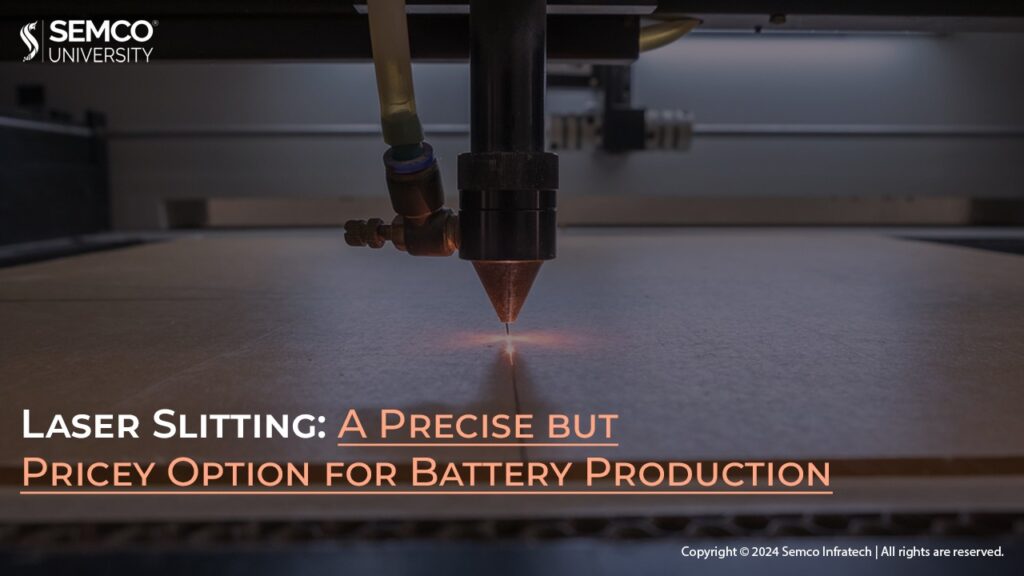The rise of electric vehicles and advancements in battery technology demand increasingly sophisticated methods for manufacturing lithium-ion battery components.
Here, laser slitting emerges as a compelling option due to its high precision and unique advantages. However, it also comes with limitations that need to be considered.
Why Laser Slitting?
Traditional mechanical slitting, widely used for cutting electrode materials in batteries, suffers from tool wear during the process. As the cutting tool dulls, the quality of the cut degrades, necessitating frequent sharpening or replacement. This significantly impacts production efficiency.
Laser slitting offers a solution by utilizing a non-contact cutting process. Here’s how it works:
Types of Laser Slitting:
- Vaporization Cutting: A high-powered laser beam vaporizes the material, creating a clean cut. Primarily used for thin metal and non-metals, this technique might be suitable for certain electrode materials.
- Melting and Cutting: The laser melts the material, followed by a gas jet (typically inert gases like argon or helium) to remove the molten metal and form the cut. This method is suitable for materials susceptible to oxidation, such as stainless steel and aluminum alloys.
- Oxygen Cutting: The laser preheats the material, followed by an active gas like oxygen to trigger an exothermic reaction and blow away the molten metal. This technique offers faster cutting speeds but might not be ideal for all battery materials.
- Slicing and Controlled Fracture: A high-powered, pulsed laser creates a small groove on the material’s surface. Applying pressure then fractures the material along the groove. This method is suitable for brittle materials.

Benefits of Laser Slitting:
- Superior Cut Quality: Laser-cut edges are narrow, with minimal heat-affected zones, preserving material properties. Dimensional accuracy can reach 0.05mm, eliminating the need for further mechanical processing. The smooth surface finish (roughness in tens of microns) contributes to better battery performance.
- High Efficiency and Versatility: CNC-controlled laser systems enable full automation and rapid switching between cutting patterns for different shapes. Laser slitting can handle both 2D and 3D geometries.
- Fast Cutting Speeds: Laser cutting offers significant speed advantages, reaching up to 600cm/min for 2mm mild steel and 1200cm/min for 5mm polypropylene resin.
- Non-Contact Process: Eliminating contact with the material avoids tool wear and the need for tool changes for different shapes. Additionally, laser cutting produces minimal noise, vibration, and pollution.
- Material Versatility: Compared to traditional methods, laser cutting can handle a wider range of materials, including metals, non-metals, composites, leather, and even some fibers. This flexibility offers possibilities for processing various battery components.
Challenges of Laser Slitting:
- Thickness Limitations: Current laser technology struggles with thicker materials, with cutting speed decreasing significantly as thickness increases. This might limit its application for some battery components.
- High Initial Investment: Laser cutting equipment comes with a hefty price tag, requiring substantial upfront investment.
Conclusion:
Laser slitting offers a promising avenue for high-precision, efficient cutting of electrode materials in battery production. However, limitations in cutting thickness and the high initial investment cost need to be carefully considered. As laser technology continues to develop, these limitations might be overcome, making laser slitting an even more attractive option for the future of battery manufacturing.


